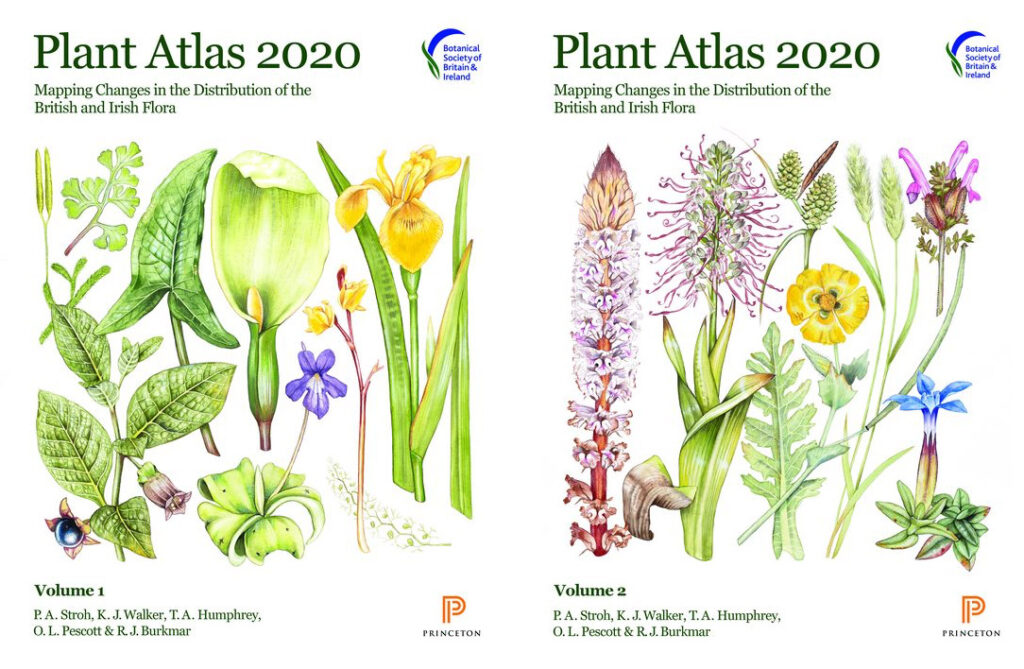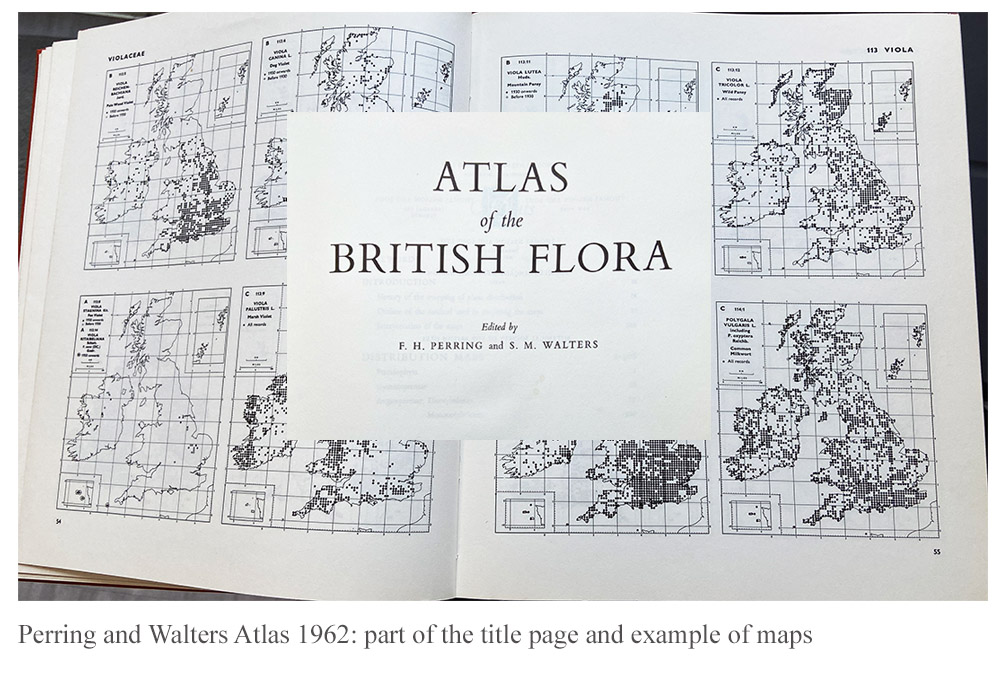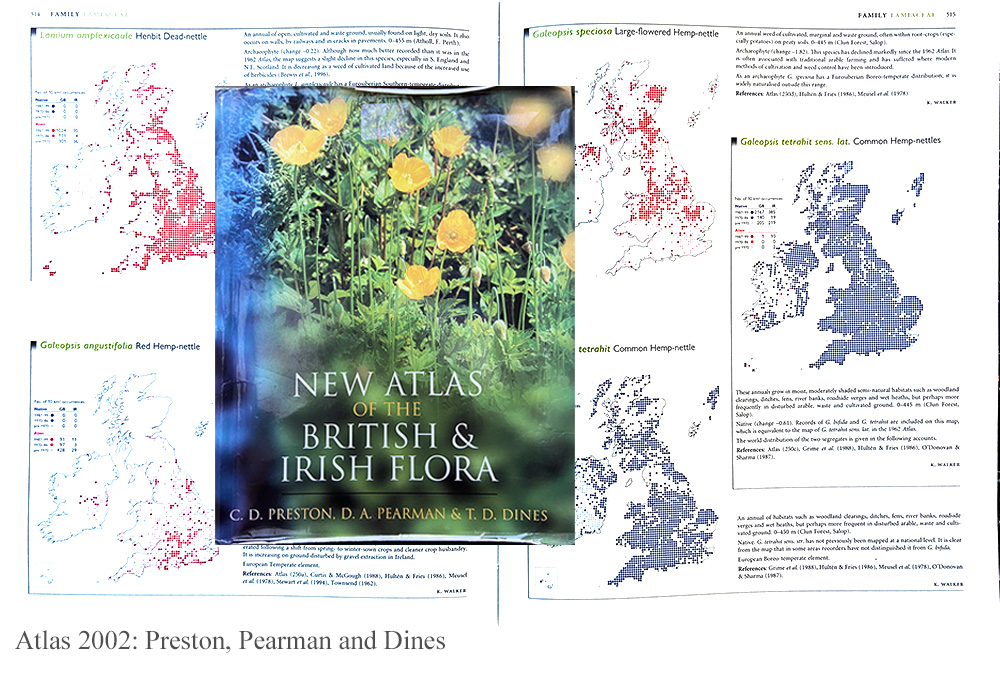Exhibition at Alyth Museum: Farming Fit for the Future. Regenerating soil. Balancing crops and livestock. Restoring biodiversity. Opening new supply chains. Lessons in the transition to sustainable food production. Cateran Ecomuseum and Bioregioning Tayside.
[Article in progress – subject to further editing, 16 July 2024]
Farming Fit for the Future opened recently at the small local museum in Alyth, Perthshire [1]. The farms involved are each moving to regenerative and sustainable practices.
The Living Field attended the exhibition’s opening to discover more of the background from organisers of the Cateran Ecomuseum, to meet the farmers and learn about their regenerative methods.

Exhibition panels on a photograph of Strathmore, north from Dunsinnen, when a layer of cloud appeared to separate the green and brown of the lowland fields from the distant hills (photo by curvedflatlands.co.uk).
Why the need for regenerative farming? Agriculture endured a sustained depression beginning in the late 1800s – a period named the Forty Bleak Years, 1875-1914 [2]. The country could not feed itself when blockaded in 1914 and then again in 1939. Subsequent governments realised they had to end their centuries-old indifference to farming and food production.
The ensuing intensification of farming after the late 1950s achieved probably the greatest ever rise in output, but some of the technologies that increased yield also damaged soil and essential ecosystem processes and polluted the wider environment.

Today, many in farming and food see the need to repair the damage and set a more sustainable course, but only a small fraction of farms are converting. Examples are needed to show how it can be done and this is where the exhibition comes in.
Clare Cooper, a founder member of the Cateran Ecomuseum, explained how the idea of an exhibition arose out of talks between the Ecomuseum [3] and the Rapid Transition Alliance [4]. More on that below …. but first some notes on the farms and what they aim to achieve.
The farms and their transitions
The exhibition introduces the problems resulting from over-intensification, long supply chains and a disconnection between food, farming and people. It moves on to look at a varied group of farms, showing how each transitioned to regenerative agriculture and the resulting benefits.
Farms covered a range of sectors including mixed arable and livestock at Leitfie Farm, Lindertis Farm and Barns of Airlie which also grows and processes hemp. There’s all-arable production at Easter Rattray Farm, pasture- and hill-grazed livestock at Kinclune Organic Livestock Farm, and three more organic farms producing varied output – South West Fullerton, East Mains Auchterhouse, and Myreside Organics. Inverquiech Farm is unusual in operating part of the land as a Permaculture system, where trees, shrubs and other perennial plants are mixed in the same space, as in a forest-garden.

A common theme was the pressing need to save, build and regenerate soil. To do this, farming needs to ensure that more organic matter, mainly from microorganisms, plants and invertbrates, is added to soil than lost from it by erosion through wind and water. Excessive loss occurs when certain factors dominate such as exposure of bare soil for long periods to solar heating, rain and wind, intrusive tillage that disrupts a soil’s cohesive networks, compaction by heavy machinery and repeated use of mineral fertiliser and pesticides.
Regenerative practices include (a) covering the ground with vegetation or mulch for as much of the year as possible, (b) replacing Intrusive, pre-sowing tillage with minimal cultivation such as direct drilling of seed, (c) raising organic matter (carbon) inputs to soil by growing perennial grass and crops, or carbon-building annual crops such as hemp, and (d) growing legumes as grains or forages that ‘fix’ nitrogen from the air into living plant matter which then turns to nitrogen-rich to soil organic matter. Chemical pesticides are reduced, or not used at all as in organic farming.
Circularity, diversity and habitat
The Farms also aim for circularity – using materials from one part of the farm to benefit another, so reducing waste. For example, livestock is grazed in open fields (not in enclosures using imported feed) and the dung used as fertiliser. Most of the farms are also diversifying in terms of the range of crops and grass grown.

The regenerative practices support what researchers call Biodiversity for Agriculture or B for A – the mostly microscopic or just visible life forms that build soil, retain nutrients and give fields some resistance to hard weather and other external forces. In supporting B for A, the fields and farms also encourage the wider biodiversity in the landscape by providing food and shelter.
The organic farms report that their changed practices have brought a range of benefits. For example, the re-establihment of wet grassand at Kinclune Farm has encouraged endangered waders such as lapwing and curlew to return. South West Fullarton, Myreside Organics and East Mains Auchterhouse stress the wide-ranging benefits of their chemical-free approach for the land, the soil, the wider biodiversity and the quality of food they produce.
Origins
The exhibition stems from two innovative movements – the Cateran Ecomuseum [3] and Bioregioning Tayside [5]. Both are based in the catchment of the River Tay and its tributaries. Clare Cooper, a founder member of both gave the Living Field some background.
The Cateran Ecomuseum is unique in that its main presence is in the countryside, not primarily in a building. Here’s an extract from the Museum’s web: “In the short period of time since the creation of the first phase of the Ecomuseum and its launch in late 2019, global heating and biodiversity loss have continued to escalate and there is now worldwide recognition that widespread behaviour change to regenerative lifestyles is necessary if we are to live within planetary ecological boundaries.”

The Ecomuseum designed a three-year programme aimed at helping communities and visitors take rapid climate action and transition to more regenerative ways of living. The farming exhibition is part of this programme, and arose through links with the Rapid Transition Alliance [4], a network of international organisations engaged in practical work, research and campaigning to tackle the climate emergency. The Ecomuseum takes inspiration from the several thousand years of history during which the people of the region have repeatedly sustained their existence by changing their relationship with the land.
Bioregioning Tayside contributes through its programmes on local food production and short food chains. Clare writes: “By 2022, Bioregioning Tayside had started to think about the food theme and ran a learning journey [5] about food producers in Tayside which led me to start thinking about the transition that food producers needed to make in the light of the polycrisis.” Then continuing the theme, Bioregioning Tayside organised a well attended conference in March 2023 on Feeding Tayside through the Climate Crisis [6].
And going back to the Ecomuseum (Clare writes) … during 2022, we were also given access to the Alyth Museum and so I proposed and we fundraised for an exhibition about local food producers who were already making rapid transitions ……”
And this exhibition is the result …. But it’s more than a room lined with wall panels. Wider discussion on its main themes should influence others to begin the transition to regenerative agriculture.

Authors \ Contacts
Background to the Cateran Ecomuseum and origins of the exhibition provided by Clare Cooper (bioregioningtayside@gmail.com) and Ruth Watson (ruth@watsonconsultants.scot). Author/contact for this article geoff.squire@hutton.ac.uk or geoff.squire@outlook.com.
Ed. Many thanks to Clare Cooper and Ruth Watson for the background to the exhibition and Cateran Ecomuseum and for the invitation to the exhibition’s launch. Images on this page are photographs of wall panels taken at the exhibition’s opening.
Sources | links
[1] Farming Fit for the Future. For location, opening times, parking, etc. see Alyth Museum. The exhibition opened on Sunday 19 May 2024 with contributions from Clare Cooper, Pete Ianetta of the James Hutton Institute, Dundee and Jillian Kennedy of the Scottish Association of Young Farmers Clubs.
[2] Symon, JA. 1959. Scottish farming – past and present. Oliver and Boyd, Edinburgh and London. Chapter 7 titled Forty Bleak Years : 1875 – 1914 covers the period of the agricultural depression from the severe weather of the late 1870s to the beginning of conflict in Europe. Governments relegated home farming in preference for food imports from north America, causing mass rural depopulation and the loss of much arable cropland and ploughed area. Though the author asserts at the end of the chapter that ‘The industry had suffered grievous hurt but had survived and by 1914 it was in a reasonably sound condition.’ he goes on to describe in Chapter 9, the period between the wars in these terms: “The policy of setting cheap imported food and high profit above the needs and security of a continuing society had created a feeling of profound depression in the (farming) industry.”
[3] Cateran Ecomuseum: more on the Museum of Rapid Transition at the Ecomuseum’s web at New Partnership will help us launch Scotland’s first Museum of Rapid Transition.
[4] The Rapid Transition Alliance is….. ‘a network of international organisations that are engaged in practical work, research and campaigning to tackle the climate emergency. We are united by the belief that we must act urgently to maintain a habitable climate and that our action must be at a speed and scale to match the challenge.’ More backgound at Museum of Rapid Transition: museums in a world facing existentiol crisis by Andrew Simms, 30 April 2019.
[5] Bioregioning Tayside’s Learning Journey 2022 – What will be on my plate in 2042: web pages describing the discussions with farmers and grower groups on the Journey.
[6] Feeding Tayside through the Climate Crisis: Launch Conference and Future Plans.’On March 24th (2023), at Discovery Point in Dundee, a group of around 100 people from across Tayside and beyond met to discuss the crucial issue of how we feed our communities through the climate crisis.’




